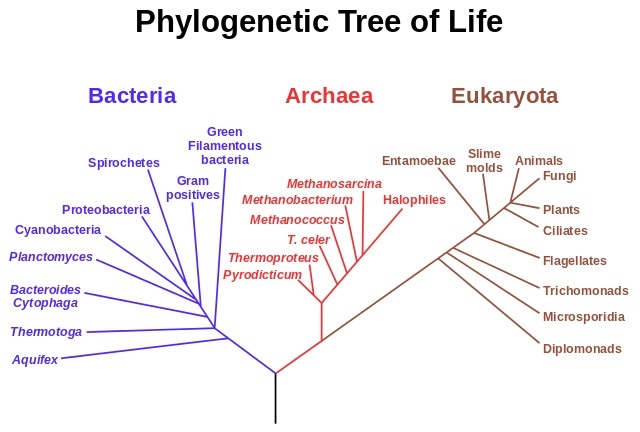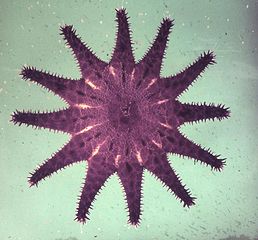Classification
This image is a broad example of a phylogenetic tree, when
traced down into more specific branches of the tree you can
eventually find Acanthaster planci. The phylogenetic
tree shown above displays the three major domains (bacteria,
archaea, and eukaryota) which are grouped into different
sections of the tree. The domains are then branched off into
different organisms by features such as cell types.
Below you w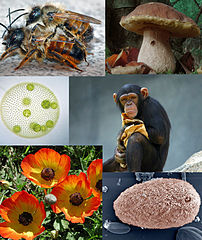 ill be guided into each stage of the Acanthaster
planci phylogenetic tree.
ill be guided into each stage of the Acanthaster
planci phylogenetic tree.
Domain: Eukarya
•Organisms with membrane-bound organelles and a nucleus
•Contains a variety of organisms such as
animals,
fungi,
plants, and
protists.
Kingdom: Animalia
•Multicellular and heterotrophic organisms
•Motile at some stage of development
•The kingdom Animalia contains a wide variety of organisms
including
insects,
mammals,
birds,
marine animals,
worms,
snails, and much more!
.jpg)
This image goes into the animal kingdom and branches off into 10
different animal phyla. Each phylum is characterized by their
specific biological, morphological, and ecological aspects.
Acanthaster planci is located within the Echinodermata phylum which
then branches into more specific identification groups per level.
Phylum: Echinodermata
•Marine organisms found in oceans
•Organisms associated with spiny (echino) skin (dermata)
•Deuterostome development: larvae and adult life-cycle stages
•Water vascular system used for movement featuring tube feet
•Calcium carbonate endoskeletons of spiny plates (ossicles)
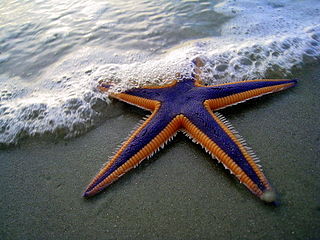
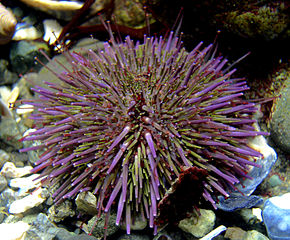
Image of a starfish (left) and Strongylocentrotus purpuratus, a
sea urchin (right).
Both images taken from Wikipedia. Origin of the image (left) by TheMarque via Flickr. Click
here to view origin. Image (right) authored by Kirt L. Onthank.
Class: Asteroidea (Sea stars or
"starfish")
•Commonly found in intertidal zones with high energy
•Found around areas with high densities of bivalves
•Possesses the ability to regenerate
•Multi-directional movement
•Possesses pedicellaria
•Predators of invertebrates and has a voracious appetite
•They have a unique stomach eversion feeding method

Image of an Oreasteridae starfish.
Image taken from Wikipedia. Authored
by
paulshaffner. Click
here for the origin via Flicker.
Order: Valvatida
•Acanthaster planci is more closely associated with
ancestors from the Valvatida order, such as the Oreasteridae family, of
which have formed morphological features to aid in irregular or rough
terrain navigation (Birkeland
and Lucas
13-14).
•Pedicellaria are clamp-like in nature.
•Specialized ossicles for increased flexibility for movement.
•Two rows of tube feet
Family: Acanthasteridae
•Contains species from the genus Acanthaster
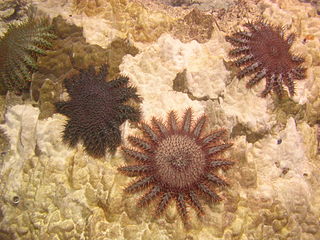
Multiple Acanthaster planci starfish.
Image taken from Wikipedia, author Rore bzh.
Genus: Acanthaster
•Acanth "thorn", aster "star"
•The genus helps give rise to the common name,
Crown-of-Thorns starfish
Species: Acanthaster
planci
•Acanth means "thorn", aster
"star" and
planci (root word of plankton) a reference to slow moving
•Named by Carl Linnaeus, 1758
•The literal meaning and crown shape created by the thorns on
the central disc gives rise to its common name Crown-of-Thorns
•Can grow up to 23 arms
•Special elongated venomous spines
•Multiple colors
•Nocturnal
•Preys upon coral polyps
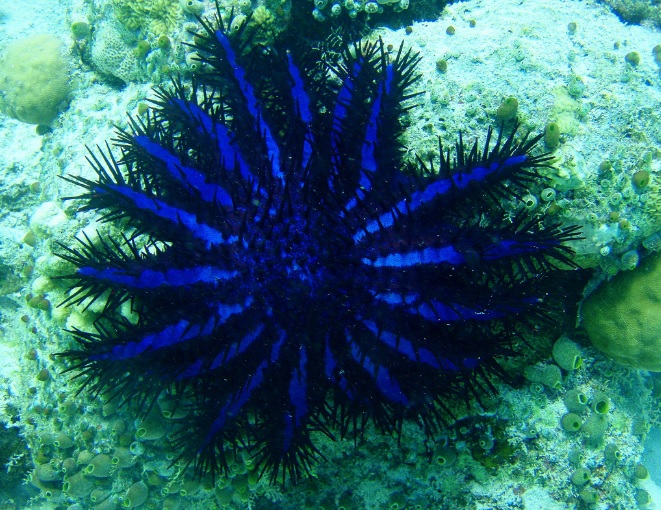
Image courtesy of lorytravelforever༽♥ॐ, thank you! Click on the
image to view more photos by her!
Now come explore the Habitat!
.jpg)
